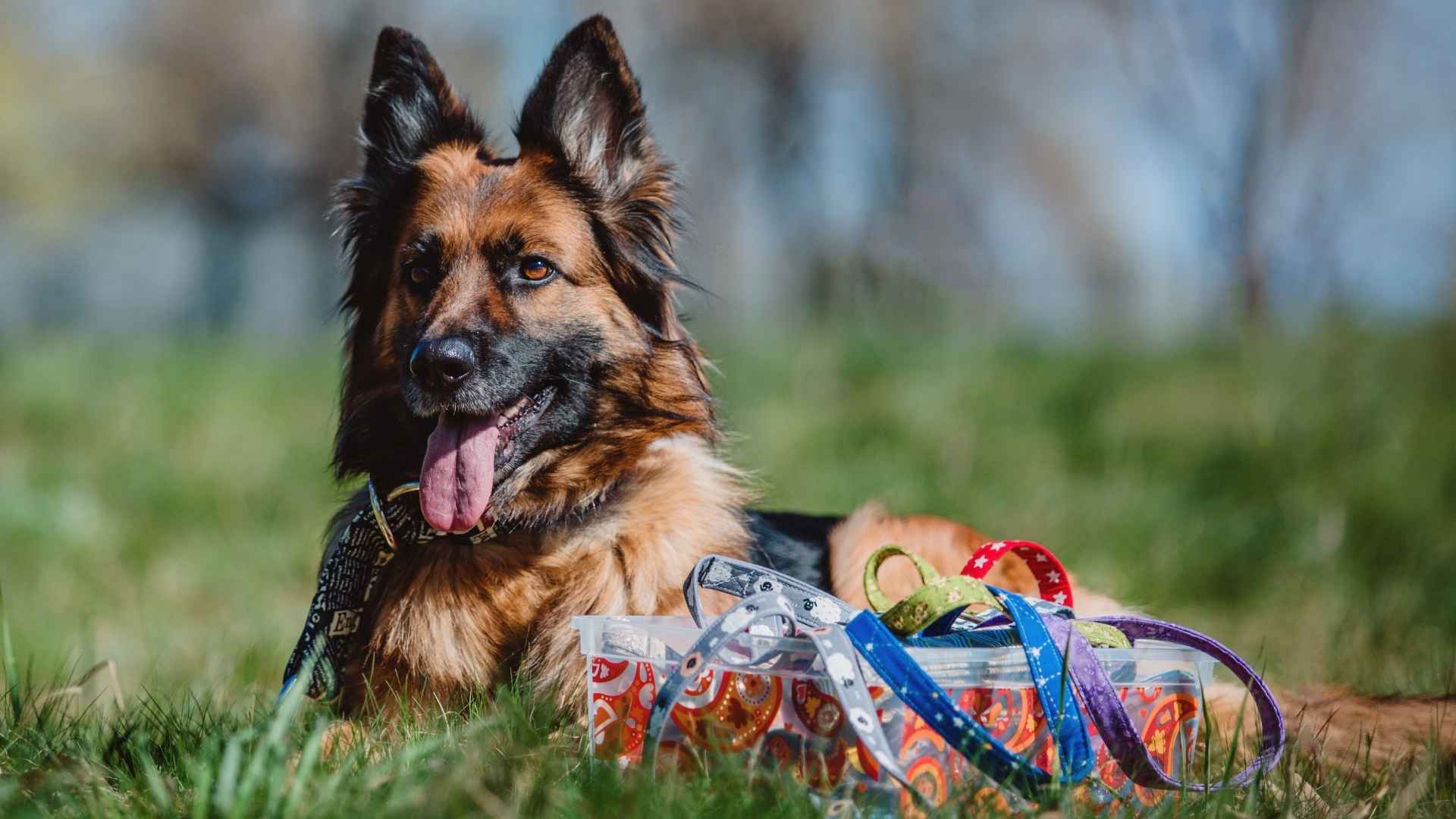German dogs bring hard-wired strength and fierce loyalty. These dogs were bred with a purpose; herding sheep, guarding homes, and walking alongside soldiers were some of their original JDs. All of these rough-tough roles came with a character, and that still shows in dogs of German origin.
But Germany’s impact goes way beyond the ever-famous shepherd that is almost synonymous with loyalty and trainability (no wonder it’s among the top police dogs). This guide looks at German dog breeds and their characteristics to further add to your knowledge.
Sharp, battle-tested, watchful, tough-minded
Loyalty in their bones, alert but not aggressive, serious muscle with a soft heart, born protectors, strong-willed,
German Dog Breeds
1. Boxer
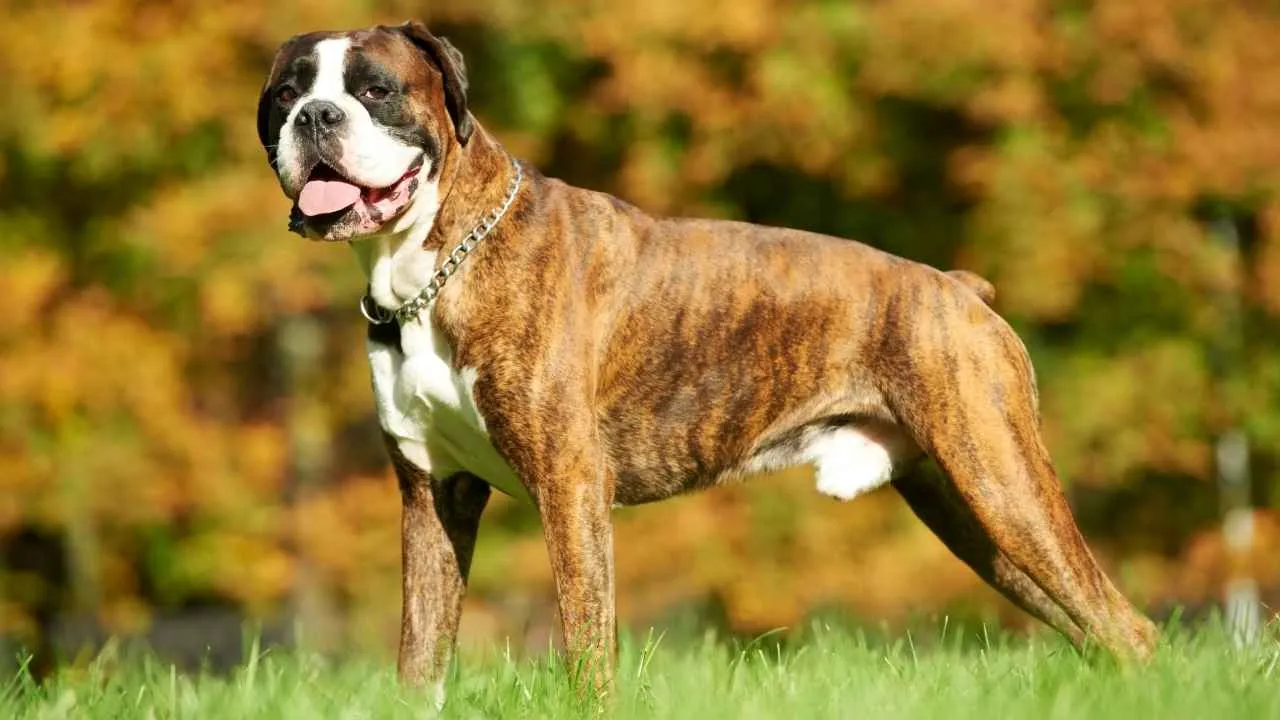
The Boxer was bred in Munich in the late 1800s by crossing the strong Bullenbeisser with the English Bulldog, so one can imagine its toughness. At first, Boxers were used as hunting dogs to hold wild boar, and later, butchers benefited from their strength to control cattle.
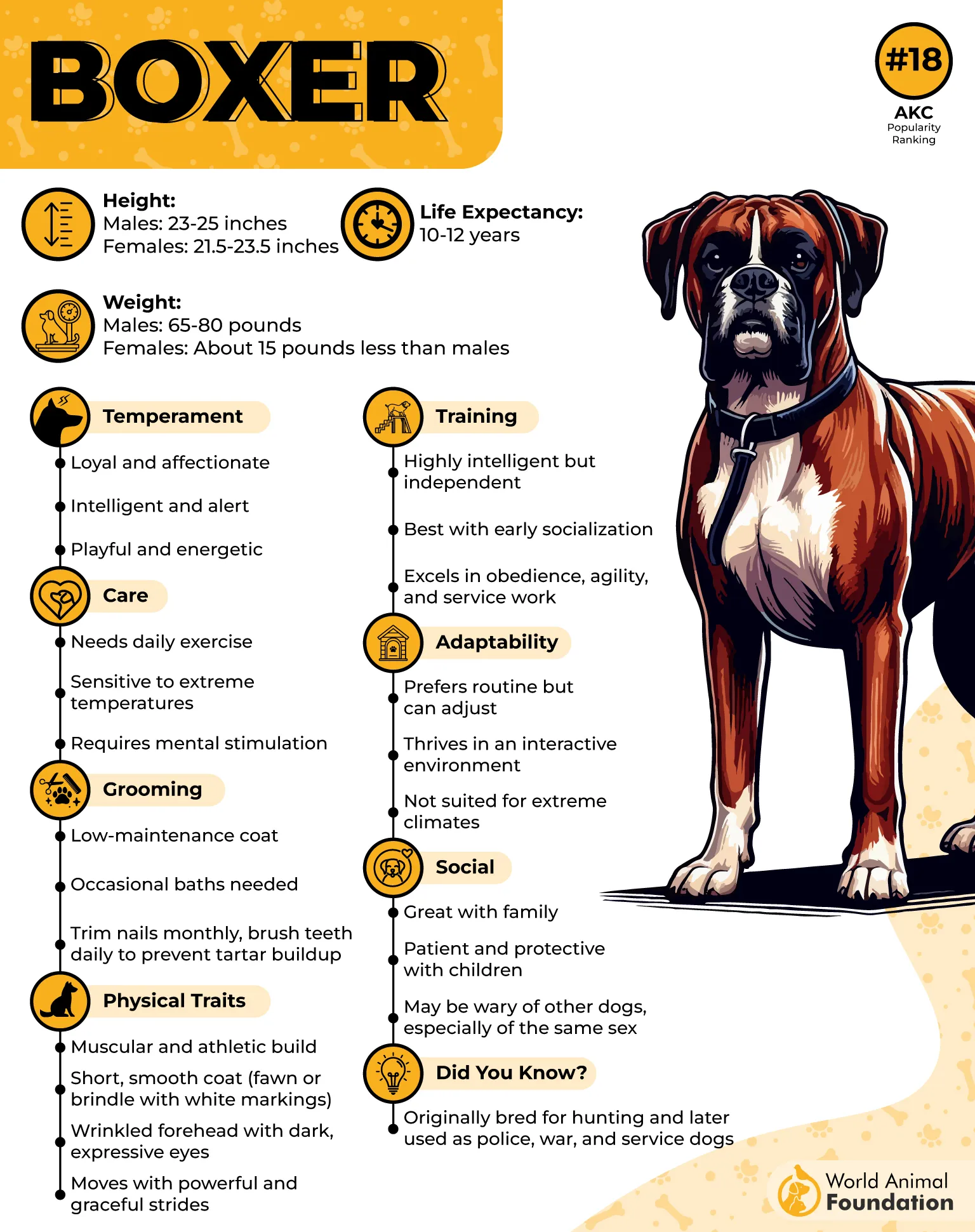
During World War I, German soldiers trusted Boxers as messengers and guard dogs. These are so tough-minded that, according to AKC, any sign of shyness or lack of alertness in this breed should be severely penalized.
In terms of appearance, this dog is quite a sight. Males grow 21-25 inches tall and can weigh over 70 pounds, while females are a bit smaller. Boxers have square jaws, short fawn or brindle coats, and alert eyes.
2. Dachshund
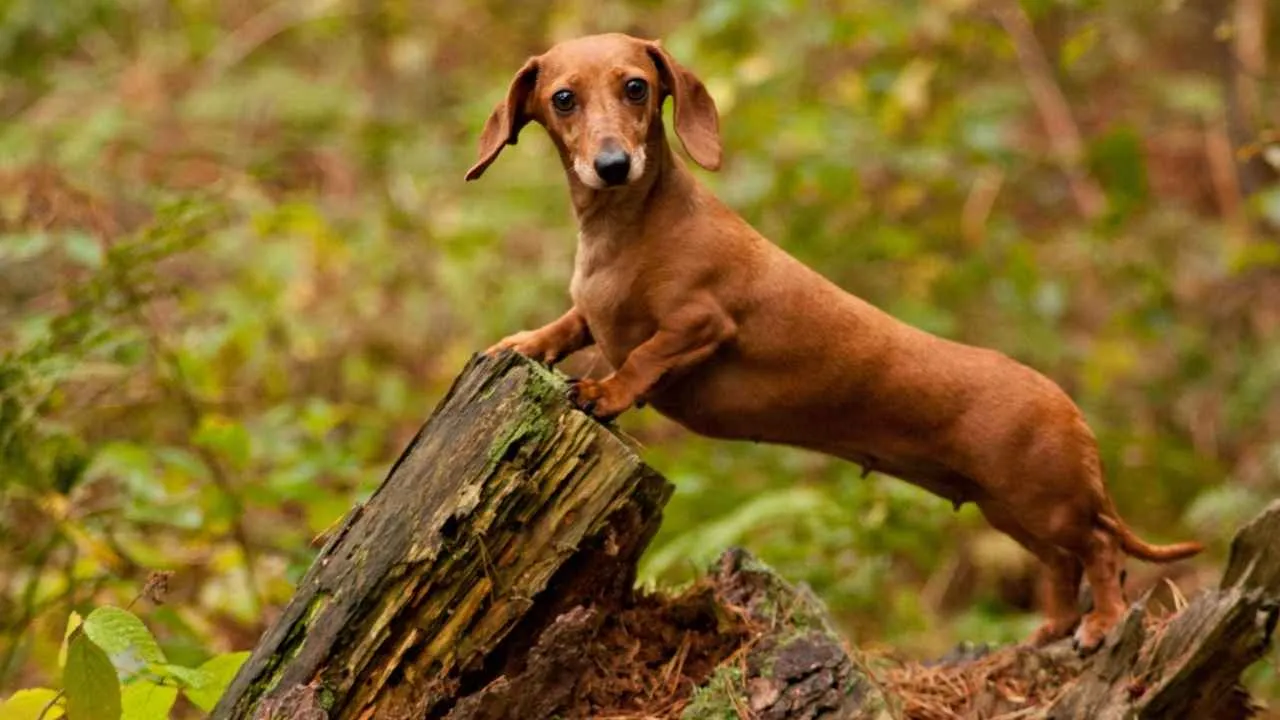
The Dachshund traces its roots to 18th-century Germany, where hunters needed a dog bold enough to chase cadgers into narrow tunnels.
That’s why breeders crossed sturdy terriers and scent hounds to perfect this breed. It had a long and low build that inspired the name ‘Dachs Hund’, or badger dog.
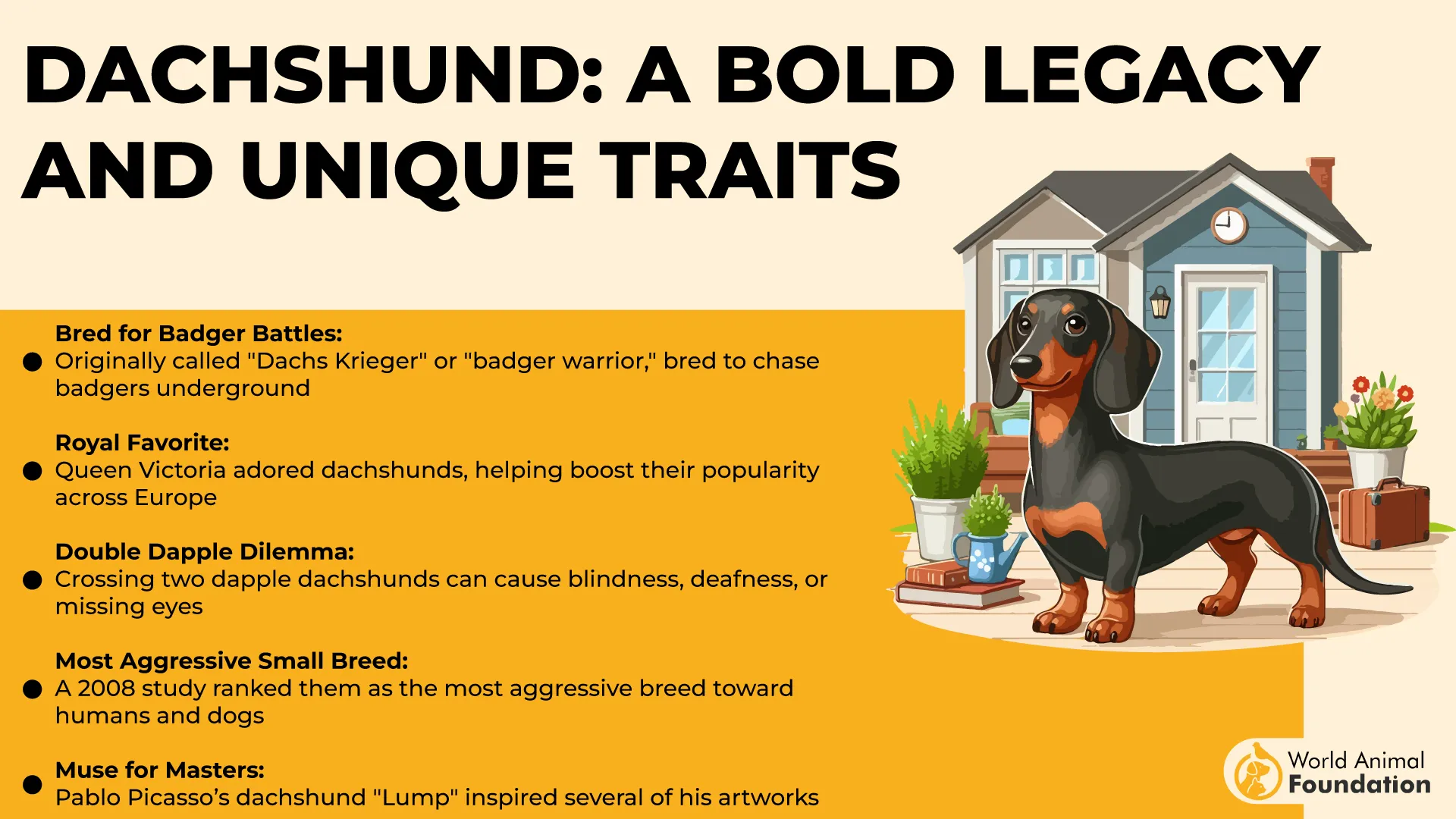
The AKC recognized this breed in 1885, and it exists in two sizes today: the standard (16-32lbs) and miniature (under 11lbs).
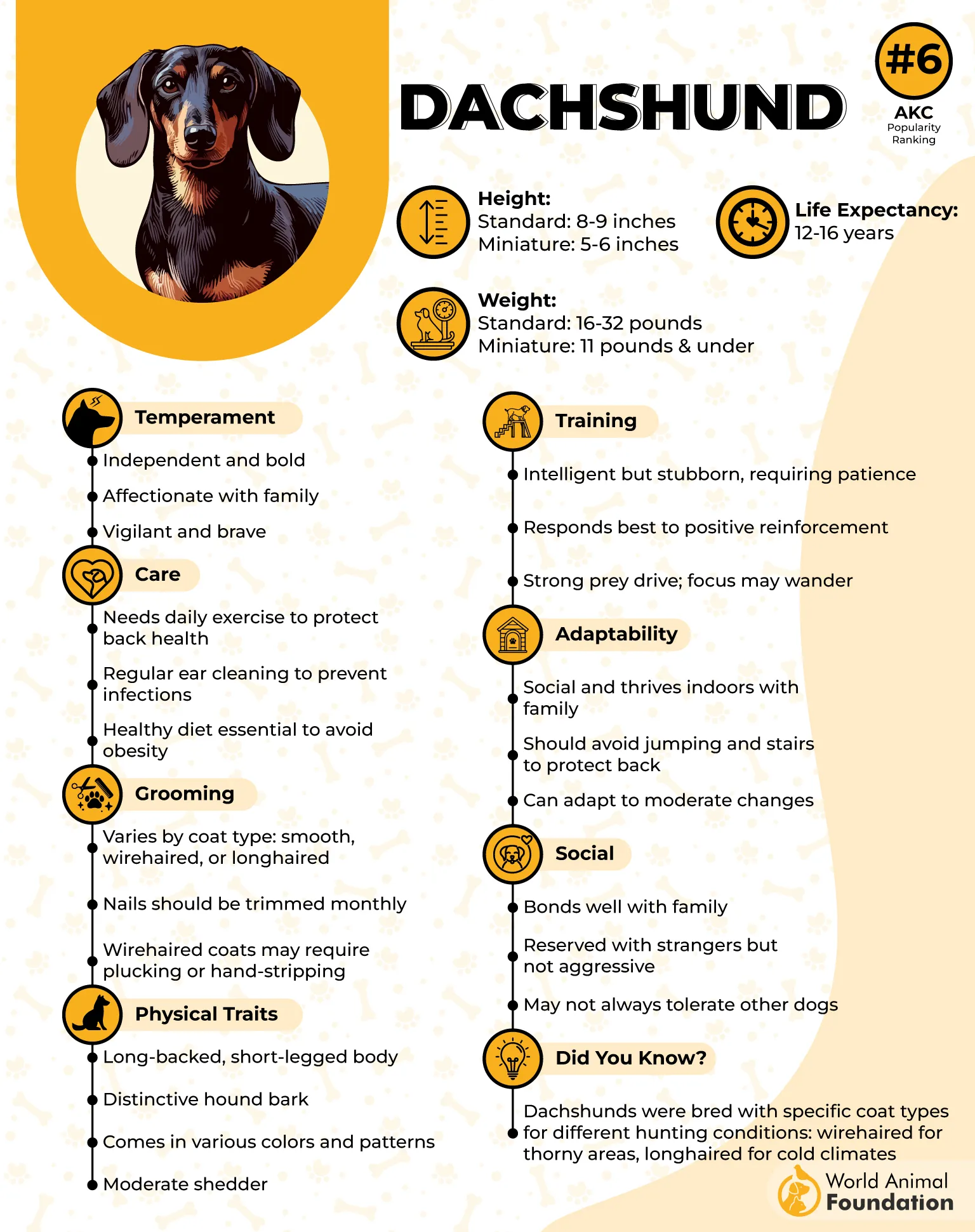
These dogs’ deep chests support their steady endurance, and their shovel-shaped paws make quick digging possible. Fast digging is this breed’s signature trait; you’ll notice when they burrow under blankets.
3. Doberman Pinscher
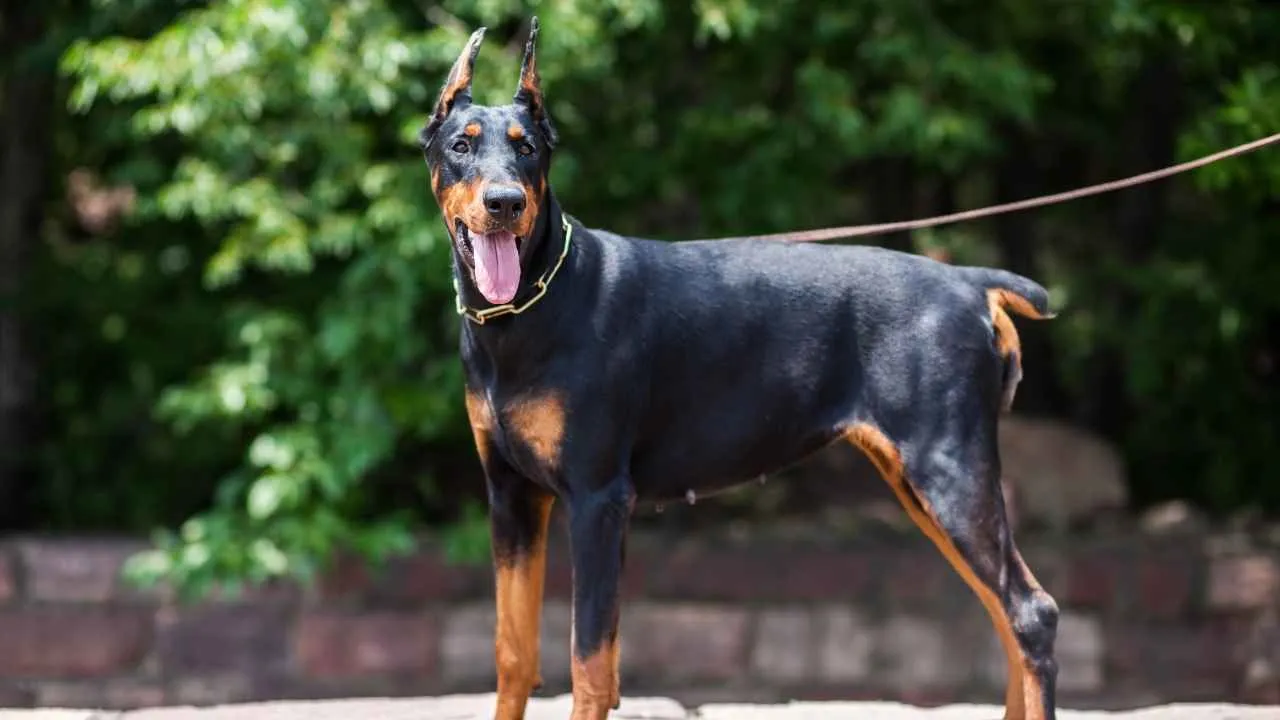
The Doberman Pinscher was first bred in Apolda, Germany, around 1890 by a tax collector named Karl Friedrich Louis Doberman, as per PetMD. He needed a fearless companion with loyalty in its bones to protect him, and that’s why he mixed dogs like Rottweiler, German Pinscher, and Weimaraner.
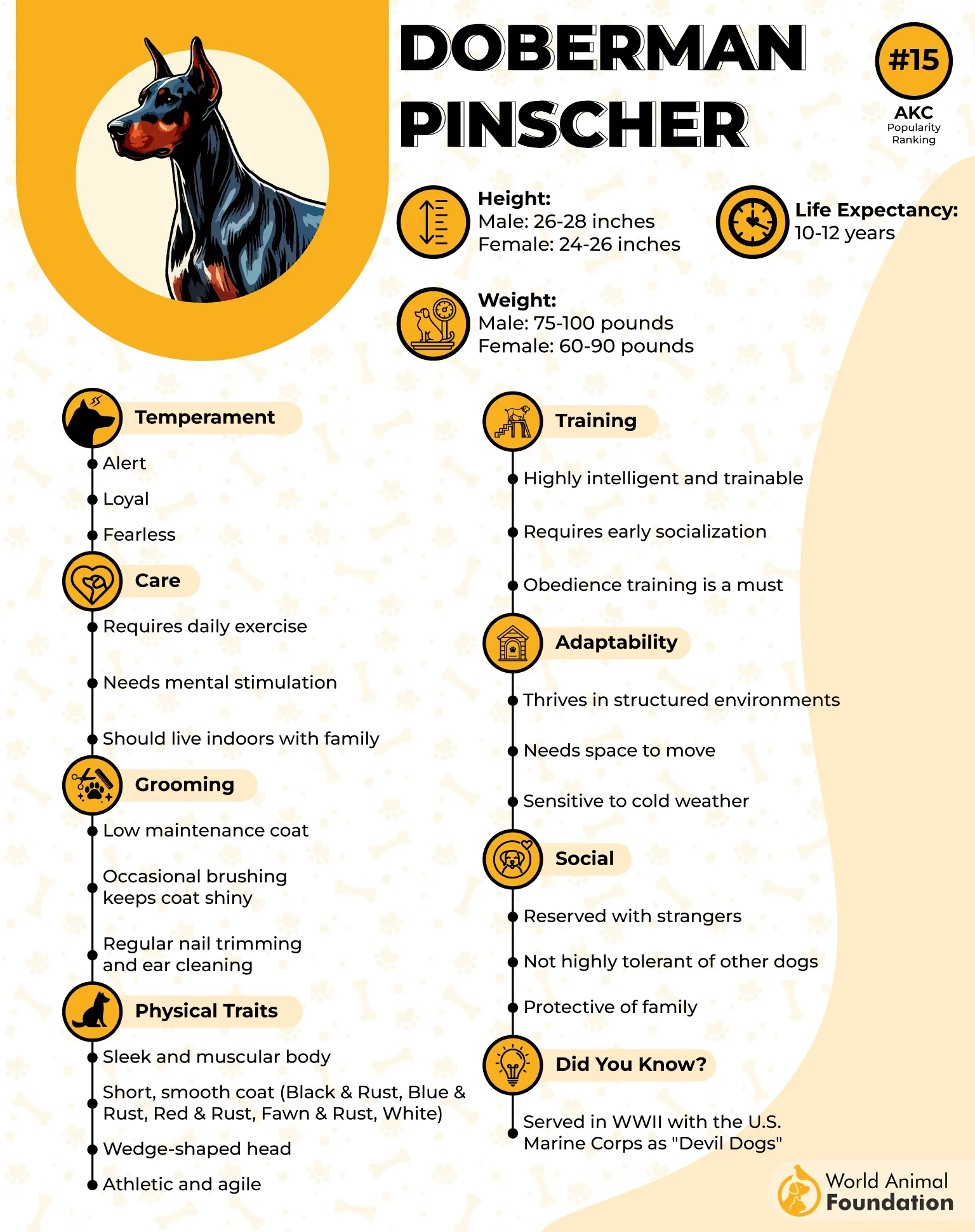
The result was an intelligent dog that later earned a place with police and military forces, thanks to its speed, sharp mind, and ability to stay calm under pressure.
These sleek dogs stand 24-28 inches tall, have a short and smooth coat which is usually black, red, blue, or fawn with rust markings.
4. Great Dane
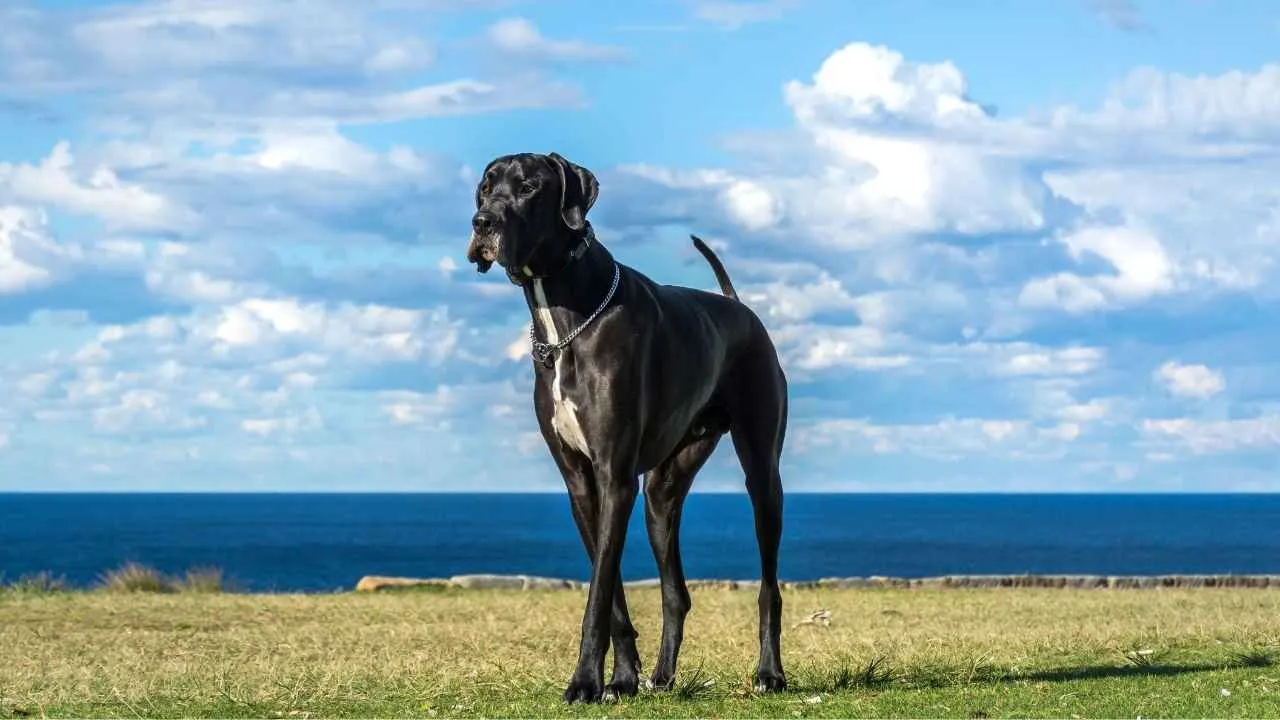
The Great Dane was bred in the 1600s in Germany for noble families, most likely from the Irish Wolfhound and English Mastiff, as per Pawlicy.
Back home, this mighty dog is still called Deutsche Dogge, and you can see its powerful past in its size. Male Great Danes are over 30 inches tall and weigh around 140-175 pounds, while the females start at 28 inches.
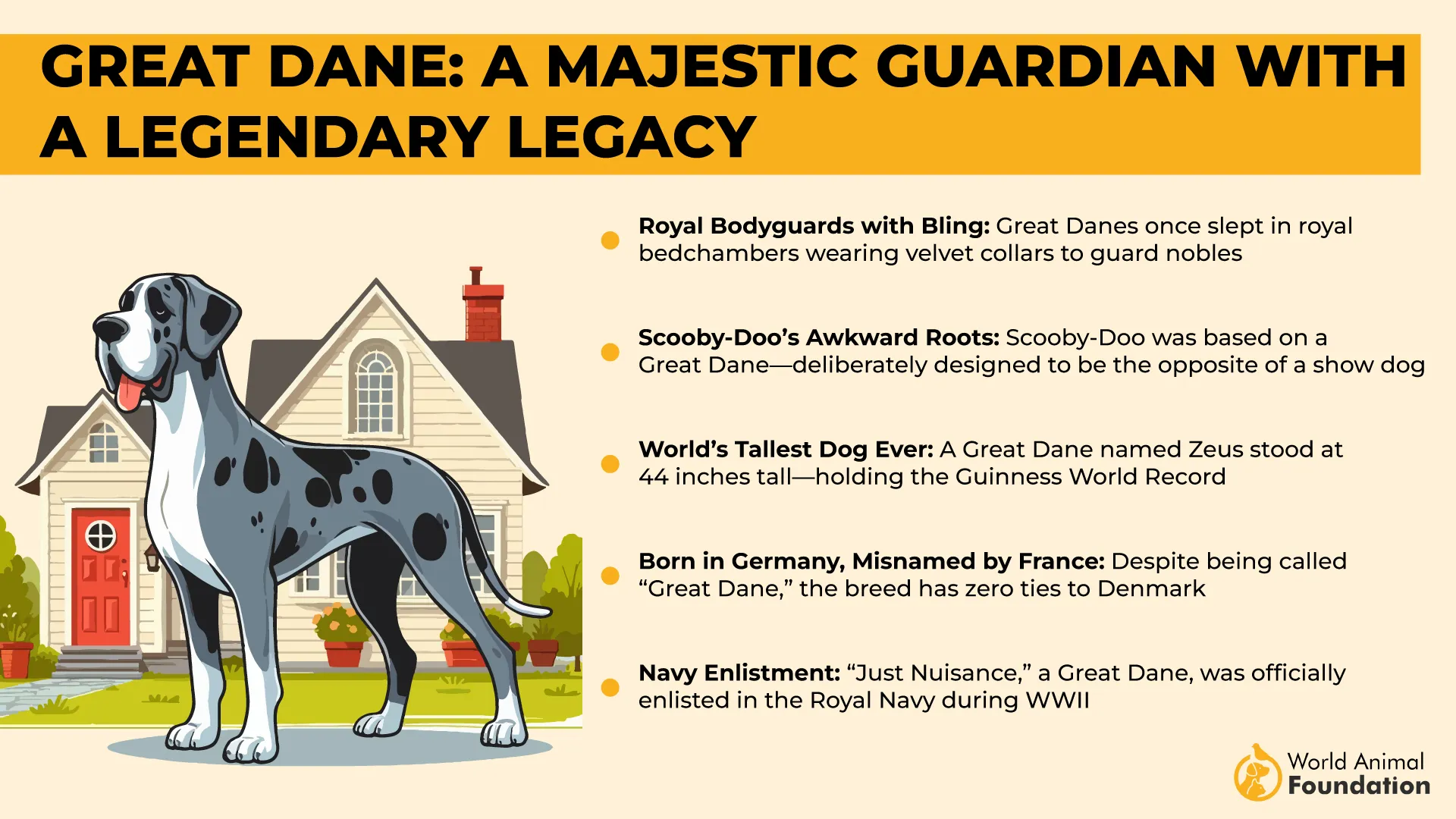
These dogs’ coats can be fawn, brindle, blue, clack, matte, and the unique harlequin pattern. But even with their towering sizes, Great Danes are people-loving and calm.
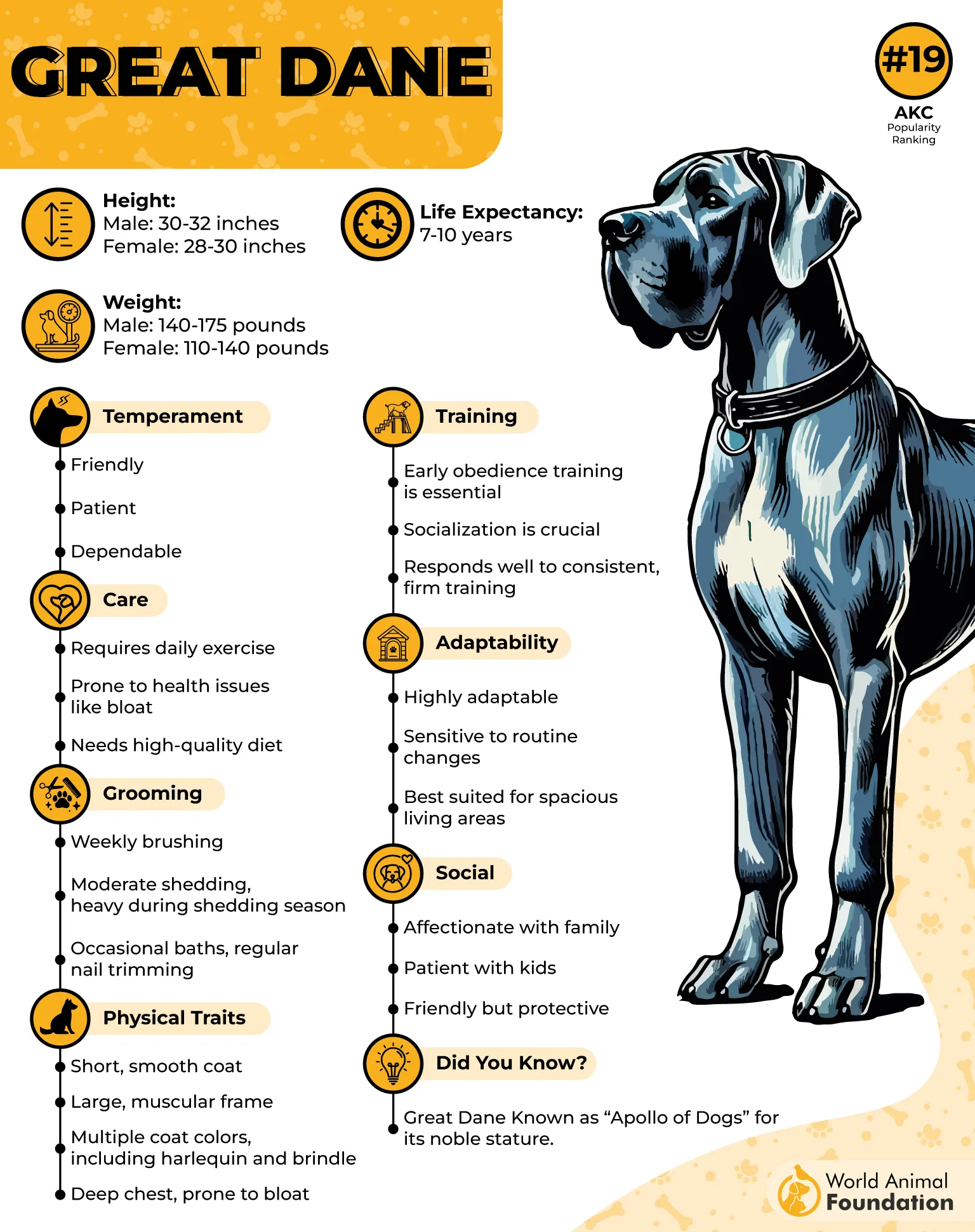
They like being close to their humans and need relaxing story times. This breed’s signature trait is the head-rest hug, where your companion will gently rest its big head on you to feel like it belongs right there.
5. German Shepherd
The German Shepherd was born in Germany in 1899 by Captain Max von Stephanitz to herd sheep and guard flocks. But it soon led armies, police units, and service-dog trainers worldwide to trust this breed for every tough job imaginable.
Even today, the GSD tops global working dogs because it has a combo of a quick mind with a body built for hard jobs. Police and military K-9 units lean on this breed’s mix of strength, keen scent, and battle-tested nerves for patrol and detection work.
A well-built Shepherd is between 22-26 inches in height and weighs 50-90 pounds, with a long and sloping outline. Its striking, dense double coat comes mostly in a black-and-tan combination.
6. Pomeranian
The Pomeranian is among the prettiest small white dogs with a smile so contagious, you can’t resist melting. It comes from the Pomerania region, which is now a part of Germany and Poland.
This white dog was originally bred down from larger Spitz-type sledge dogs to create a smaller dog that kept the same bold spirit and thick coat.
In the late 1800s, Queen Victoria helped make the breed popular by showing off her small pom, and the tiny furbaby soon became a loved lap dog.
7. Rottweiler
The Rottweiler can make any burglar think 10 times before approaching a property, thanks to its serious face and a growl that can scare anyone. Its roots go back to the Roman Empire, where Rottweiler’s ancestors drove cattle for marching legions.
But centuries later, they settled in the German market town of Rottweil, where butchers used dogs’ muscle and iron nerves to move herds and guard money purses. This resilience earned this one the name ‘Metzgerhund’ or the butcher’s dog.
Today, Rottweilers show the same power and work drive. Police, military, and search-and-rescue teams prize this one ability to stay calm during chaos.
8. German Shorthaired Pointer
The German Shorthaired Pointer (GSP) is a versatile breed that is well-known as an all-purpose gun dog. It’s capable of high performance in the field and water, making it a trusted partner for people who love strong-willed companions.
This breed took place in mid-1800s Germany when hunters blended local bird dogs with Spanish and English pointers to create one tireless dog (no wonder it’s a gun of a dog).
The German Shorthaired Pointer is easy to recognize with its webbed feet, a strong nose, and relentless drive that makes it a powerhouse.
9. Weimaraner
The Weimaraner came into existence in early-19th-century Germany at the court of Weimar. It was bred for nobles who wanted a dog that could track, point, and retrieve big game like boar and bear.
Pointers, bloodhounds, and local hounds were crossed to make this breed, so they provided stamina, speed, and a sharp nose to Weimaraner dogs. Interestingly, this dog is still called the Gray Ghost.
This one’s brains match its athletic body. Weimaraners pick up commands quickly and can work all day in fields, woods, or marshes.
If there are enough outlets to let out pent-up energy, these dogs will stick close to you and prove to be easy-going companions.
10. American Eskimo
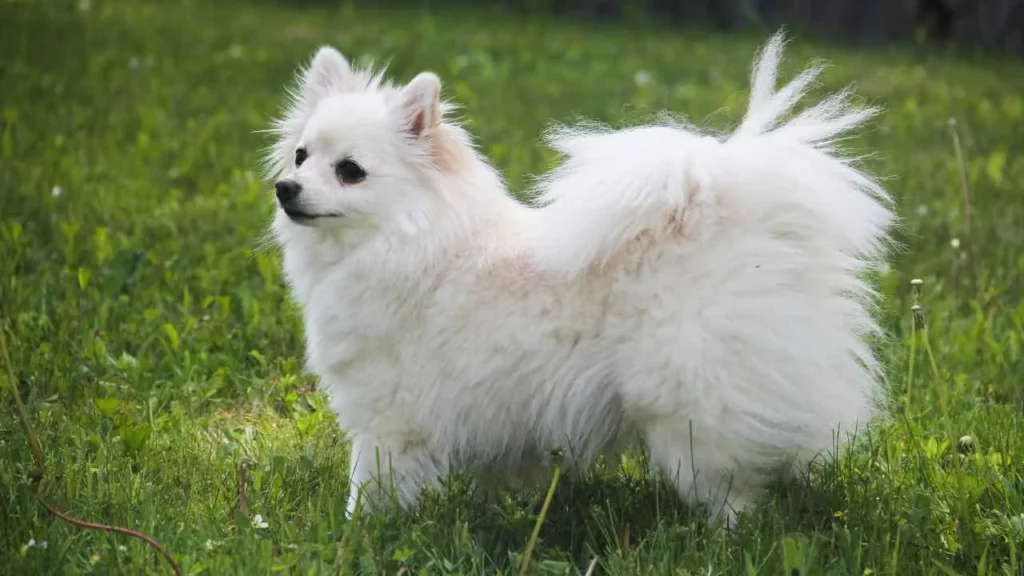
The American Eskimo (don’t assume its origin from the name) is among the most beautiful dog breeds. The Eskie traces back to German Spitz dogs that arrived with immigrants in the 1800s, but during WWII, it was renamed to sidestep anti-German feelings.
It was bred to guard property, herd livestock, and keep families company. But later, it worked on Midwest farms in the US and wowed circus crowds by walking tightropes, which is proof of its stamina and balance.
Its sharp instincts make it a dependable watchdog, and they also make great family pets because of their soft nature.
Conclusion
Dog breeds may start in one country, move across borders and generations, and adapt to new homes. What began as a working dog in one region might be a lap dog today halfway across the world.
That’s the beauty of breeds shaped by purpose and time; they evolve but never lose what made them special in the first place.


